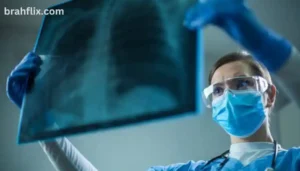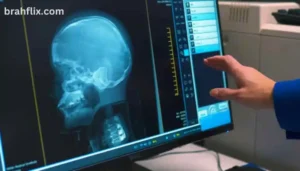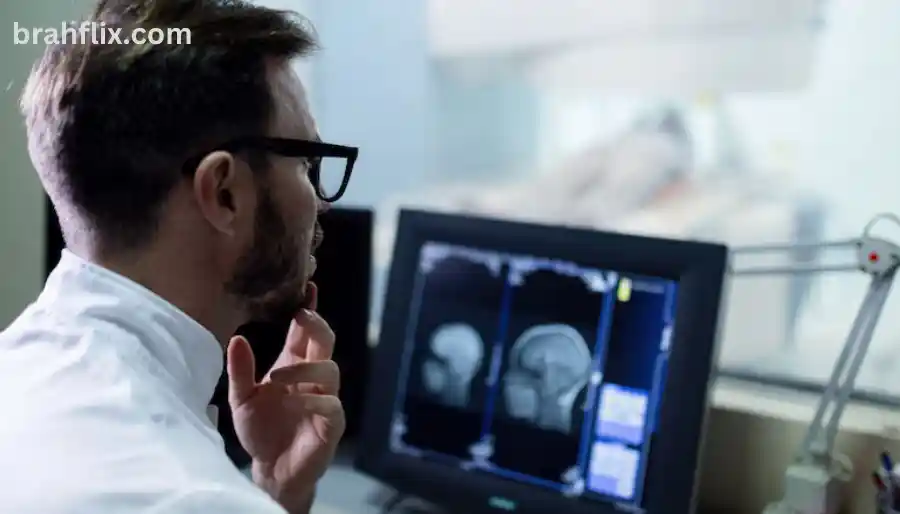Introduction
If you’re considering a career in healthcare with a focus on diagnostic imaging, understanding how to become a radiology tech is essential. Radiologic technologists, also known as radiology techs, are vital members of the medical team who use advanced imaging technologies to assist in diagnosing and treating patients. This guide will provide a thorough overview of the steps required to enter this rewarding field, including educational pathways, certification requirements, and job prospects.
Key Takeaways
- Educational Requirements: Discover the necessary degrees and programs.
- Certification and Licensing: Understand the process for obtaining credentials.
- Daily Responsibilities: Learn about the typical duties of a radiology tech.
- Career Outlook: Explore job growth and opportunities in the field.
- Skills and Attributes: Identify essential skills needed for success.
1. What is a Radiology Tech?
A radiology tech, or radiologic technologist, is a healthcare professional who operates imaging equipment to capture images of the body’s internal structures. These images help physicians diagnose and treat a variety of medical conditions. Radiology techs work with technologies such as X-rays, computed tomography (CT), and magnetic resonance imaging (MRI) to produce high-quality images.
Key Responsibilities
- Imaging Procedures: Conduct X-rays, CT scans, MRIs, and other imaging tests.
- Patient Interaction: Explain procedures to patients, ensure comfort, and position them correctly.
- Image Review: Check images for clarity and accuracy before sending them to physicians.
- Equipment Maintenance: Regularly maintain and calibrate imaging equipment.
- Record Keeping: Document patient information and imaging results meticulously.
Work Environments
Radiology techs typically work in hospitals, diagnostic imaging centers, outpatient clinics, and sometimes in mobile imaging units. Their work environments can vary, from busy emergency rooms to quiet imaging departments.
2. Educational Pathways to Becoming a Radiology Tech
To become a radiology tech, you must complete a formal education program in radiologic technology. Here’s a step-by-step guide on the educational pathway:
Step 1: Obtain a High School Diploma or GED
Before enrolling in a radiologic technology program, you’ll need to have a high school diploma or GED. Courses in biology, chemistry, and math will be particularly beneficial.
Step 2: Enroll in an Accredited Radiologic Technology Program
Radiologic Technology Programs:
- Associate Degree: The most common path, typically taking two years to complete, provides both classroom instruction and clinical experience.
- Bachelor’s Degree: Some choose to pursue a Bachelor’s degree for broader knowledge and advanced career opportunities. This usually takes four years.
Program Components:
- Core Courses: Include subjects such as anatomy, radiographic techniques, patient care, and radiation physics.
- Clinical Training: Hands-on practice in a healthcare setting under the supervision of experienced professionals.
Step 3: Obtain Certification and Licensure
- Certification: Pass the national certification exam administered by the American Registry of Radiologic Technologists (ARRT) to become a registered radiologic technologist (RT).
- Licensure: Most states require a license to practice. Check specific state requirements for licensure.
Certification Tips:
- Study Effectively: Use study guides and practice exams to prepare for the ARRT exam.
- Stay Informed: Keep up with continuing education to maintain certification.
Step 4: Pursue Specializations
After gaining initial certification, consider specializing in areas such as CT, MRI, or mammography to enhance career prospects and potentially earn higher salaries.
3. Key Skills and Attributes for Radiology Techs
To excel as a radiology tech, certain skills and attributes are crucial. These include:
Technical Skills
- Radiographic Expertise: Proficiency in operating imaging equipment and understanding radiographic techniques.
- Safety Protocols: Knowledge of radiation safety and proper use of protective measures.
Interpersonal Skills
- Communication: Ability to clearly explain procedures to patients and collaborate with healthcare professionals.
- Empathy: Providing compassionate care to patients who may be anxious or in pain.
Attention to Detail
- Precision: Ensuring accurate patient positioning and high-quality images.
- Documentation: Maintaining detailed and accurate records of imaging procedures and patient information.
4. Job Responsibilities and Daily Duties
Radiology techs perform a variety of tasks daily. Here’s a closer look at their primary duties:
Imaging Procedures
- X-rays: Capture images of bones and internal organs.
- CT Scans: Provide detailed cross-sectional images for diagnosing complex conditions.
- MRIs: Use magnetic fields to create detailed images of soft tissues.
Patient Care
- Preparation: Prepare patients for imaging by explaining procedures and ensuring their comfort.
- Positioning: Position patients accurately to obtain the best possible images.
Equipment Management
- Maintenance: Regularly check and maintain imaging equipment to ensure optimal performance.
- Troubleshooting: Address any technical issues that arise with the equipment.
Administrative Tasks
- Record Keeping: Document patient information, imaging results, and other relevant data.
- Compliance: Ensure adherence to safety regulations and quality standards.
5. Certification and Licensing Process
Obtaining certification and licensure is a key step in becoming a radiology tech. Here’s what you need to know:
Certification
- ARRT Certification: After completing an accredited program, you must pass the ARRT certification exam. This exam tests your knowledge and skills in radiologic technology.
- Preparation: Use study materials and practice exams to prepare effectively.
Licensure
- State Requirements: Most states require licensure to practice as a radiology tech. Requirements vary by state, so check with your state’s licensing board for specifics.
- Continuing Education: To maintain licensure and certification, you must complete continuing education credits regularly.
6. Career Outlook and Opportunities
The career outlook for radiology techs is promising, with many opportunities for advancement and specialization. Here’s an overview of the job market:
Job Growth
- Employment Growth: The U.S. Bureau of Labor Statistics projects a 7% growth rate for radiologic technologists from 2021 to 2031, faster than the average for all occupations.
- Demand: Increased demand is driven by an aging population and advancements in imaging technology.
Career Advancement
- Specializations: Opportunities to specialize in CT, MRI, mammography, or interventional radiology.
- Leadership Roles: Potential to move into supervisory or managerial positions.
- Education: Pursue further education and training for advanced roles or teaching positions.
Job Locations
- Hospitals: Many radiology techs work in hospitals, including emergency rooms and imaging departments.
- Outpatient Clinics: Diagnostic imaging centers and private practices are also common work environments.
7. Financial Considerations and Salary Expectations
Understanding the financial aspects of a career as a radiology tech is crucial. Here’s what you need to know:
Salary Information
- Median Salary: As of 2023, the median annual salary for radiologic technologists is approximately $64,000.
- Variation: Salaries can vary based on location, experience, and specialization.
Educational Costs
- Program Costs: Tuition for radiologic technology programs can range from $5,000 to $30,000, depending on the program and institution.
- Financial Aid: Explore scholarships, grants, and student loans to help cover educational expenses.
Return on Investment
- Job Stability: A career in radiologic technology offers job stability and a strong return on investment for educational costs.
8. Challenges and Rewards in the Radiology Tech Profession
Like any profession, working as a radiology tech comes with its challenges and rewards. Here’s a balanced view:
Challenges
- Physical Demands: The job can be physically demanding, involving long periods of standing and handling equipment.
- Emotional Stress: Dealing with patients who may be in distress or experiencing severe health issues.
Rewards
- Job Satisfaction: Helping patients and contributing to their care provides a sense of fulfillment.
- Career Growth: Opportunities for specialization and advancement can lead to a rewarding career.
9. How to Prepare for the Certification Exam
Successfully passing the certification exam is crucial. Here’s how to prepare effectively:
Study Strategies
- Study Guides: Utilize textbooks and study guides specifically designed for the ARRT exam.
- Practice Tests: Take practice exams to familiarize yourself with the test format and types of questions.
Exam Day Tips
- Rest Well: Ensure you get a good night’s sleep before the exam day.
- Arrive Early: Arrive at the testing center early to complete any necessary paperwork and get settled.
Continuing Education
- Stay Current: Engage in continuing education to keep up with advances in radiologic technology and maintain certification.
FAQs About Becoming a Radiology Tech
1. What educational background is needed to become a radiology tech?
You need an Associate’s or Bachelor’s degree in Radiologic Technology from an accredited program.
2. How long does it take to complete radiology tech training?
Typically, it takes about 2 years for an Associate’s degree or 4 years for a Bachelor’s degree.
3. What certifications are required to work as a radiology tech?
You need to pass the ARRT certification exam and obtain state licensure.
4. What skills are essential for a radiology tech?
Technical skills, attention to detail, communication, and empathy are crucial.
5. What are the job prospects for radiology techs?
The job market is strong, with a projected growth rate of 7% from 2021 to 2031.
6. Can I specialize in areas other than radiology technology?
Yes, specializations in CT, MRI, or mammography are available and can enhance career opportunities.
7. What are the typical working conditions for radiology techs?
Radiology techs work in hospitals, imaging centers, and medical offices, with physical demands and sometimes irregular hours.
8. How much can a radiology tech expect to earn?
The median annual salary is about $64,000, with variations based on location and experience.
9. What continuing education is required?
Radiology techs must complete continuing education credits every two years to maintain certification.
Conclusion
Understanding how to become a radiology tech involves navigating educational requirements, certification processes, and career opportunities. With a promising job outlook, diverse specializations, and the chance to make a significant impact in patient care, a career in radiologic technology can be both fulfilling and rewarding.
Are you ready to embark on a career as a radiology tech? What aspect of the profession interests you the most? If you’re keen to explore other healthcare careers or need more information on radiologic technology, check out our other informative blogs!
Looking for more insights into healthcare careers? Dive into our blog for additional guidance and tips to help you find your perfect career path.


